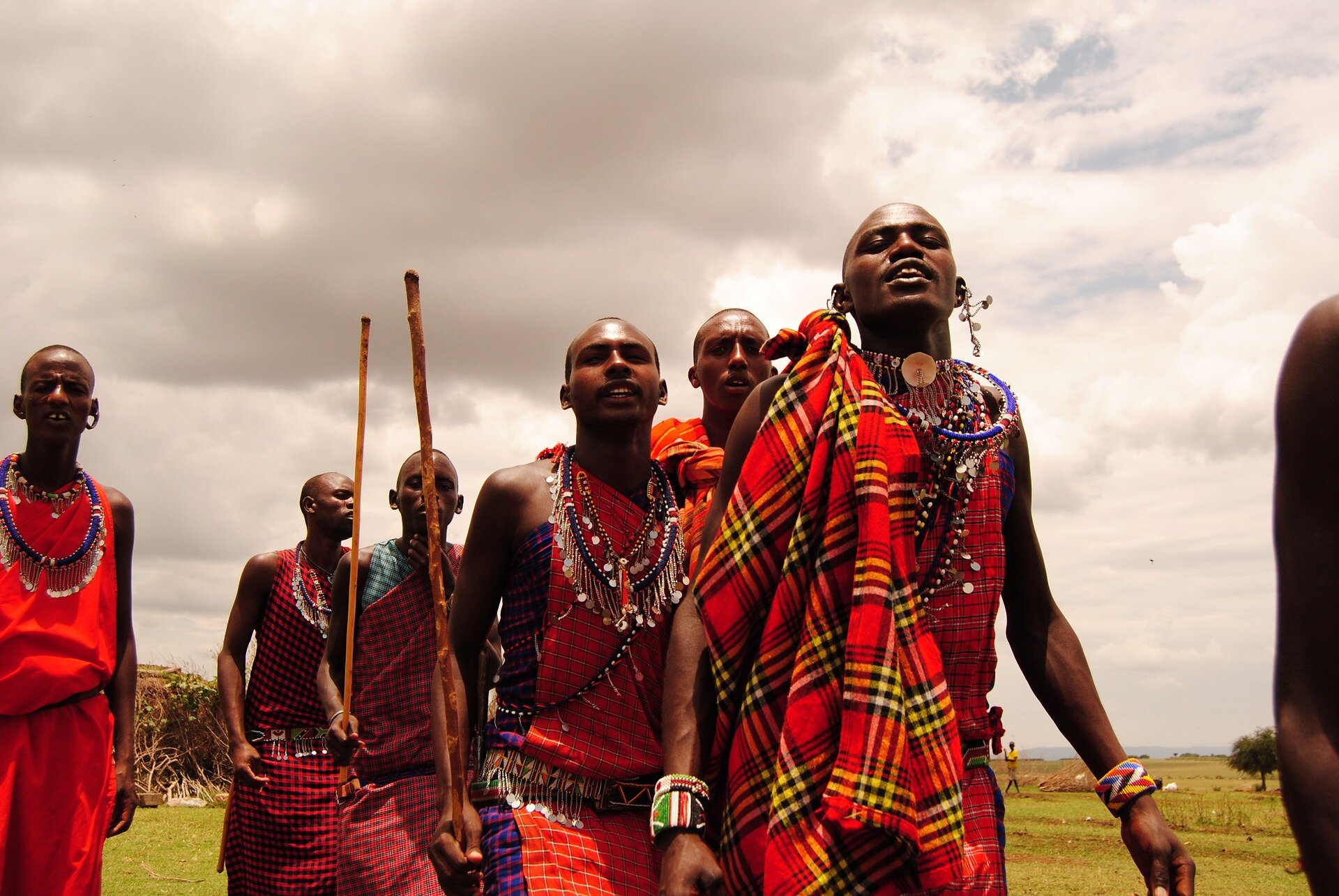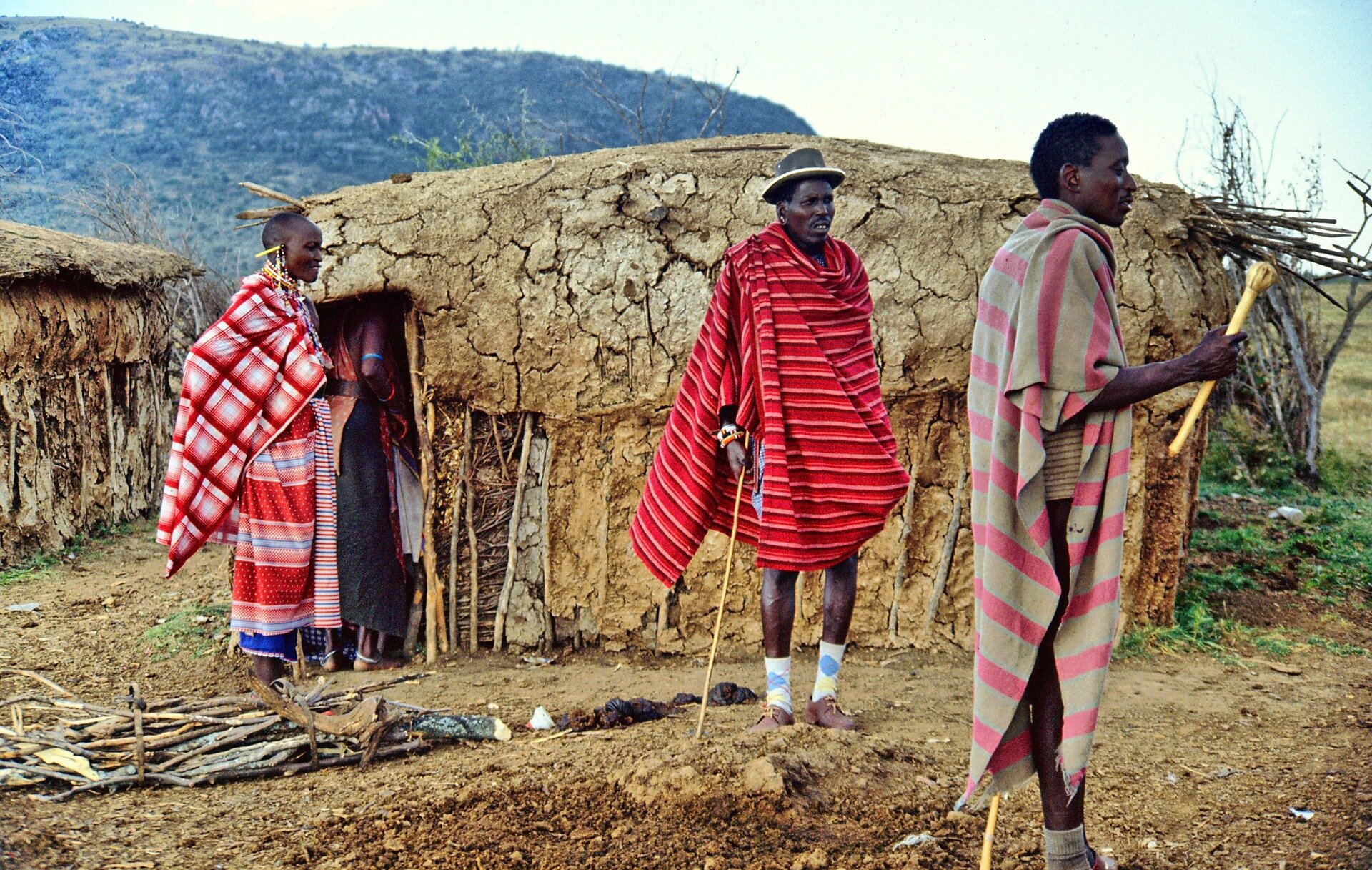As one of the most iconic African safari destinations, Kenya is one of the most popular tourist destinations in Africa. Home to over 50 tribes of native peoples, Kenya is also the home of the Maasai Tribe. While many African tribes have lost their traditions over time, the Maasai tribe is well known for their strong traditions, unique culture, and red tribal dress. As they stand firm in their traditional lifestyle and lore, the Maasai tribe are an inspiration.
History
The Maasai Tribe have not had an easy life. According to Maasai belief, the tribe originated in north-west Kenya, just north of Lake Turkana in the lower Nile Valley. Still speaking the Nilotic ethnic language, Maasais speak Maa. As they are solely semi nomadic and pastoral, the Maasai tribe live solely off the land alone. After depopulating their surroundings, the Maasai tribe move to the next area in order to survive.
Until European settlers arrived, the Maasai peoples owned almost all of the most fertile lands in Kenya. However, their man-made spears were no match for armed British troops. In 1904 the Maasai tribe lost the battle for their best land and signed their first agreement with the europeans. While this land was some of the best in Kenya, the Europeans were not content and further fought to get more. Furthermore, in 1911 a small group of Maasai signed another agreement giving up even more land. Despite not being fully understood–or being the popular vote–these select few Maasai signed away valuable land resulting in devastating consequences for the Maasai peoples.
As a total of around two-thirds of their land was lost, the Maasai tribe still struggle today. While Kenya continues to grow, and land becomes more sought-after, the Maasai tribe suffer as a result.
Maasai Men
Within Kenya, to be born male into the Maasai tribe, is known to be born into one of the world’s largest (and last) great warrior cultures. Maasai men are taught the responsibilities of being a man from almost when they begin to walk. In other words, these men are taught to be warriors. As a great source of pride in the Maasai culture, the tribal warriors are celebrated often through rituals and ceremonies. Guided by their fathers and other elders, young boys master cultural practices, customary laws, and other warrior-responsibilities that will be expected as an elder.
Maasai Women
As one of the most traditional tribes in Africa, the Maasai have a very unique and established culture. Mainly patriarchal in nature, men are at the top of the social hierarchy. As a result, the majority of Maasai women will live a life of cultural oppression and poverty. With a life expectancy of only 45 years, Maasai women live with many physical discomforts and live under a man and family that they did not personally choose. Denied the right to education, Maasai women do only what they know to do–follow the rules of tradition. Despite living such a difficult life, Maasai women are strong, positive and have created a very strong sense of sisterhood among one another.
Religion
Not only are the Maasai tribe firm in their cultural traditions, so too is true with their religion. As a monotheistic religion, the Maasai tribe worship one God. Engai or Enkai is known to have been manifested in two forms: the black God, who was kind and benevolent; and the red God, who was vindictive and unforgiving.
Traditional Dress
Traditionally, Maasai men and women have dressed in animal skins. While they still hold firm to this tradition, animal skins have become harder to attain. In place of animal skins, the Maasai tribe are well known for their traditional red dress. Known to the tribe as shuka (sheets), this red dress is never seen without beaded jewelry loaded around the neck and arms. Worn by both men and women, the colors may vary depending on the occasion.
Maasai beauty also is known for the vast stretching of earlobes by both sexes. The statement large metal gold hoops are known by jewelry designers all over the world and are often used as inspiration for more modern jewelry collections. Maasai women do not grow their hair long and keep it short and shaved. For many years, a traditional tribe mark of the Maasai tribe was the lack of two bottom teeth on the lower jaw. Traditional Maasai medicine is delivered orally therefore infant oral mutilation has become a strong part of not only Maasai culture, but also beauty.
Housing
Co-existing with wildlife, the Maasai tribe refer to their homes as large areas of land. Due to their semi-nomadic life, their shelters are often loosely constructed and semi-permanent. Built by the women, the small, circular homes are made up of the natural resources that are available– typically mud, grass, wood, and cow-dung.
The Maasai Tribe in Kenya are proud to welcome visitors to their villages with song and dance. Want to experience the Maasai culture? Check out our Kenya expedition to plan your trip.
Post written by Brooklyn Cathers




